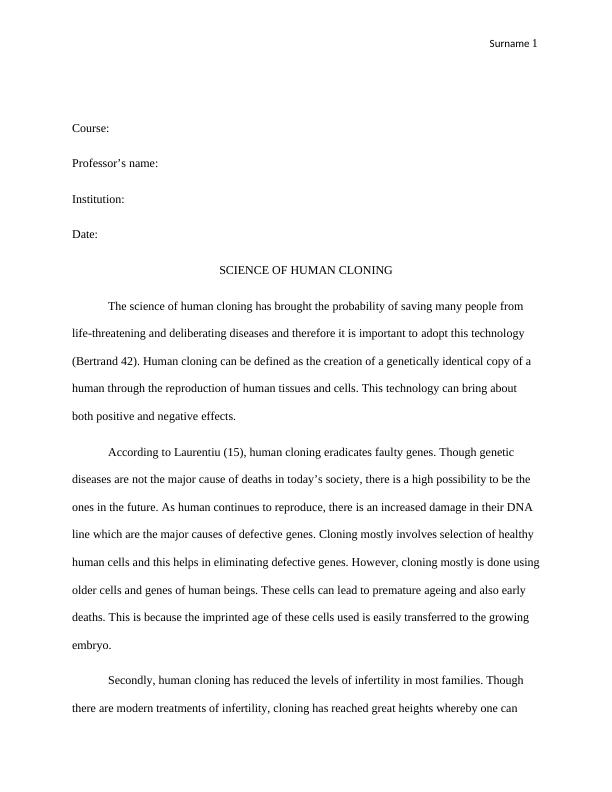Science of Human Cloning: Positive and Negative Effects
Added on 2023-06-01
3 Pages698 Words173 Views
End of preview
Want to access all the pages? Upload your documents or become a member.
Somatic Cell Nuclear Transfer: Advantages and Disadvantages of Cloning
|4
|625
|109
Introduction to Gene Therapy (PDF)
|5
|1212
|59
Histopathology Oral Cancer Research Paper 2022
|6
|1154
|23
Chronic Lymphocytic Leukemia: Epidemiology, Etiology, Pathophysiology, Diagnosis, Types of Medications, and Board Style Questions
|15
|1379
|86
Electromagnetic Field Exposure Effects Assignment PDF
|37
|16339
|105
Telomeres: The Connection to Ageing and Cancer
|4
|637
|396
